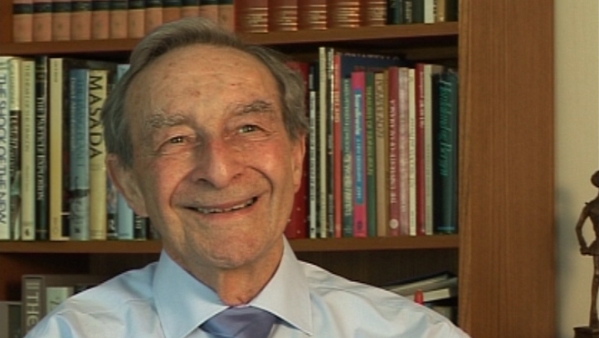NEXT STORY

How radioactivity affects atomic weight
RELATED STORIES

NEXT STORY

How radioactivity affects atomic weight
RELATED STORIES


|
Views | Duration | |
|---|---|---|---|
| 101. My graduate students: Peter Perkins and Ian Worrell | 87 | 02:18 | |
| 102. Expansion of the Department of Chemistry at Nottingham University | 73 | 03:44 | |
| 103. My role in IUPAC | 46 | 02:22 | |
| 104. Establishing atomic weights | 50 | 03:35 | |
| 105. Forming a team at IUPAC | 39 | 01:22 | |
| 106. How isotopes affect atomic weight | 51 | 01:27 | |
| 107. Geochemistry determining atomic weight | 45 | 02:14 | |
| 108. How radioactivity affects atomic weight | 46 | 04:36 | |
| 109. The Oklo Phenomenon | 96 | 05:28 | |
| 110. The Oklo sake vase made for me | 54 | 01:10 |


Over the millions and billions of years that the Earth’s crust had been formed, the atoms were reacting and if they had different weights to different isotopes, they’d react at different speeds, there would be a fractionation. Just as you can make heavy water by a process, that is going on naturally. So if you get the water from seawater or you get it from the Baltic or you get it from snow or you distil it and keep distilling it, you will alter the atomic weight of hydrogen minutely, perhaps in parts per million. But sometimes those variations occur much more noticeably.
If you get a sample of boron dug up from compounds in Turkey it has a different atomic weight from... the boron that you’d get from the lakes... dry lakes in California. And so people were getting different values at the highest order of instrumentation... different values for the atomic weights so that one could only publish a range of values and sometimes that limited. Now, there is a caveat I have to put on there – there are 19, possibly 20 elements which are what are called mono-isotopic. There is only one type of atom of that element that occurs in nature. There are 19 of those and they have their atomic weight now known to at least nine significant figures because it can be measured by a mass spectrometry very, very accurately indeed. For all others, in principle, there is a variation. For some, the variation is large; for some it is not so large and is only noticeable.
Norman Greenwood (1925-2012) was born in Australia and graduated from Melbourne University before going to Cambridge. His wide-ranging research in inorganic and structural chemistry made major advances in the chemistry of boron hydrides and other main-group element compounds. He also pioneered the application of Mössbauer spectroscopy to problems in chemistry. He was a prolific writer and inspirational lecturer on chemical and educational themes, and held numerous visiting professorships throughout the world.
Title: Geochemistry determining atomic weight
Listeners: Brian Johnson
Professor Brian FG Johnson FRS, FRSE, FRS Chem, FAcad Eu, FAS. Professor of Inorganic Chemistry University of Edinburgh 1991-1995, Professor of Inorganic Chemistry University of Cambridge 1995-2005, Master Fitzwilliam College Cambridge 1999-2005. Research interests include studies of transition metal carbonyls, organometallic chemistry, nano- particles and homogeneous catalysis. Professor Johnson is the author of over 1000 research articles and papers.
Tags: Turkey, California
Duration: 2 minutes, 14 seconds
Date story recorded: May 2011
Date story went live: 25 November 2011